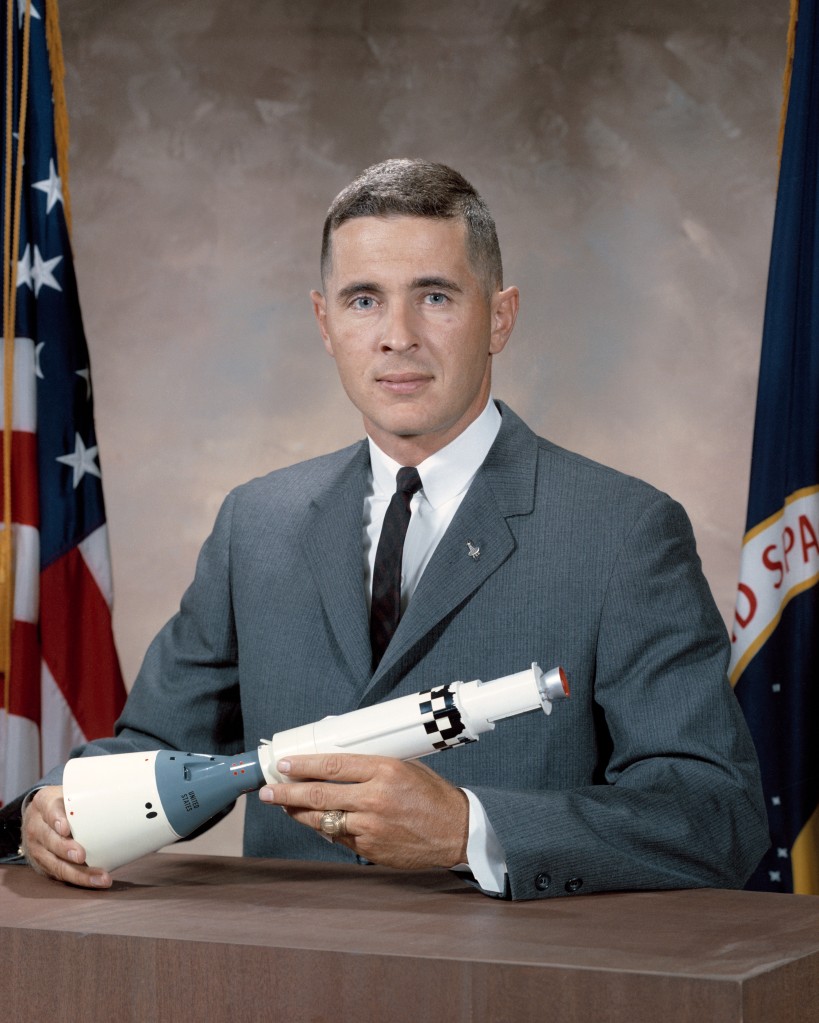Remembering William Anders

There is a cliche that says a picture is worth a thousand words. The picture above has generated millions of words, I’m sure. Some believe this photograph, known as “Earthrise,” is the most famous and influential photograph ever taken. It is certainly one of my favorites.
All of that comes to mind as I ponder the fact that the man who took that famous image has died. Astronaut William Anders was ninety years old.

Tragically, Anders lost his life on June 7, 2024, in a plane crash. He was piloting a small plane over the waters north of Seattle. Anders was the sole occupant of a Beechcraft T-34 Mentor which crashed in what the National Transportation Safety Board described as “unknown circumstances” around eighty feet from the island. The retired Major General graduated from the U.S. Naval Academy in 1955 after which he joined the Air Force as a pilot, before being selected as an astronaut in 1964. In this capacity he was the lunar module pilot for Apollo 8 which orbited the Moon 10 times without landing, before returning to Earth. Seven months later Neil Armstrong became the first person to step foot on the Moon as part of the Apollo 11 mission. NASA has posted a video Remembrance of Anders.
“Earthrise” holds a special place as a symbol of space exploration and our perception of Earth as a singular, interconnected ecosystem. It’s a testament to humanity’s ability to transcend boundaries and view our home from a completely new perspective. So, while it may not be the single most famous photograph ever taken, it is certainly among the most iconic and enduring images of the 20th century.
As an astronaut aboard Apollo 8, Anders, along with his crewmates, achieved the monumental feat of becoming the first humans to leave Earth’s orbit and circle the Moon. Anders’ contributions to space exploration were not just limited to his time in orbit. His dedication to advancing human knowledge and his commitment to sharing the wonders of the universe with the world continued long after his return to Earth.
“The Apollo 8 crew took on [one] of the hardest, highest-risk missions one can imagine,” Dan Dumbacher, CEO of the American Institute of Aeronautics and Astronautics, told Smithsonian magazine in an email. “Because of the pressures of the space race, the mission objective of orbiting the moon was set just four months before [Apollo 8] was scheduled to launch,” Teasel Muir-Harmony, curator of the Apollo collection at the Smithsonian’s National Air and Space Museum, write in an email to Smithsonian magazine. “This timeline required intense training and focus from the crew. As the first mission of its kind, it also required tremendous bravery.”
Earthrise was taken on December 24th, 1968. It happened a few minutes after 10:30 am Houston time, as Apollo 8 was coming around from the far side of the Moon for the fourth time. Mission Commander Frank Borman was in the left-hand seat, preparing to turn the spacecraft to a new orientation according to the flight plan. Navigator Jim Lovell was in the spacecraft’s lower equipment bay, about to make sightings on lunar landmarks with the onboard sextant, and Bill Anders was in the right-hand seat, observing the Moon through his side window, and taking pictures with a Hasselblad still camera, fitted with a 250-mm telephoto lens. Anders saw the earth, and thought to grab from Lovell the one camera loaded with color film.
The photograph was made into a postage stamp in 1969 and galvanized the environmental protection movement, appearing on posters during the first Earth Day in 1970, theNew York Times’ Richard Goldstein reports. In a 2015 interview with Forbes’ Jim Clash, Anders said: “The view points out the beauty of Earth and its fragility. It helped kick start the environmental movement.” Together, the Apollo 8 crew members—Anders, Lovell and Borman—were named the Time magazine “Men of the Year” for 1968. Later, Anders served on the backup crew for the Apollo 11 mission.
Following Apollo 8, Anders one and only journey into space, he served as the executive secretary for the National Aeronautics and Space Council from 1969 to 1973. He also held high-ranking positions within the Atomic Energy Commission and Nuclear Regulatory Commission, and for a little over a year, from 1976 to 1977, he was the U.S. ambassador to Norway.
Today, the Earthrise photograph and the camera Anders used to capture it are on display in the “One World Connected” gallery at the National Air and Space Museum.
The best quote about the impact of Earthrise on humanity came, fittingly, from Anders himself:
“We came all this way to explore the moon, and the most important thing is that we discovered the Earth,”
William Anders
#####